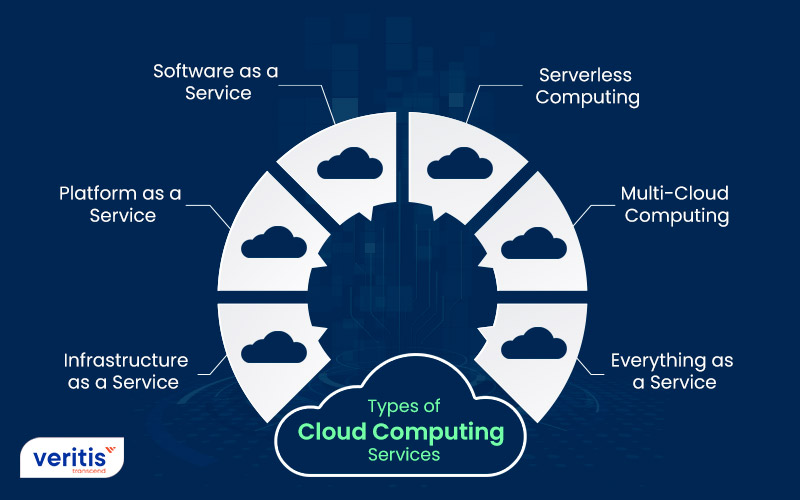LinkDaddy Cloud Services Decoded: Insider Insights right into Universal Cloud Service Advancements
LinkDaddy Cloud Services Decoded: Insider Insights right into Universal Cloud Service Advancements
Blog Article
Simplify Your Facilities With Cloud Solutions
As organizations navigate the ever-evolving landscape of technology and data management, the duty of cloud services in simplifying infrastructure has actually become progressively noticeable. Just how can businesses efficiently navigate this transition and truly open the potential of cloud solutions for simplifying their facilities?
Benefits of Cloud Provider
Cloud solutions supply a streamlined technique to handling IT infrastructure, offering companies with scalability, adaptability, and cost-efficiency. One of the vital benefits of cloud services is the scalability they use.
Furthermore, cloud services eliminate the requirement for companies to spend in pricey software and hardware. This cost-efficiency is a significant advantage, particularly for tiny to medium-sized business seeking to decrease ahead of time expenses. By making use of cloud services, services can access top notch IT resources without the substantial price related to traditional framework configurations.
Moreover, cloud services supply organizations with the adaptability to access their data and applications from anywhere with a web link. This degree of ease of access improves collaboration amongst teams, allows remote job, and raises total performance. The versatility supplied by cloud services empowers companies to adapt swiftly to transforming market problems and consumer needs.
Expense Financial Savings and Scalability
In addition to the functional advantages highlighted previously, the integration of cloud solutions right into a business's infrastructure generates considerable price financial savings and boosted scalability. Cloud services use a pay-as-you-go model, allowing organizations to range sources up or down based upon current needs, thus preventing the prices linked with preserving excess capability. This versatility makes it possible for companies to adapt quickly to rising and fall demands without incurring unneeded expenditures.
Furthermore, cloud services remove the demand for ahead of time financial investments in software and hardware, reducing resources expenses. General expenses are also minimized as firms no more require to manage and preserve physical web servers, resulting in reduced power consumption and IT staffing costs. Additionally, cloud services supply automated updates and upkeep, making certain that the infrastructure continues to be protected and up-to-date without calling for hand-operated interventions.
Improved Safety Measures
When integrating cloud services right into a company's infrastructure to secure sensitive data and ensure compliance with market regulations,Implementing stringent safety and security measures is vital. Cloud company use improved safety functions such as data file encryption, firewall software defense, and multi-factor authentication to alleviate cybersecurity dangers. File encryption aids safeguard information both at rest and en route, making sure that just accredited users can access delicate info. Firewalls serve as a barrier between internal networks and exterior dangers, surveillance and managing outward bound and inbound network website traffic. Multi-factor authentication includes an additional layer of protection by calling for individuals to supply multiple kinds of confirmation before accessing the cloud services.
Furthermore, regular protection audits and conformity assessments aid identify vulnerabilities linkdaddy cloud services press release and make sure adherence to sector requirements. Companies can additionally take advantage of functions like computerized protection updates and real-time hazard tracking offered by cloud provider. By prioritizing security measures and remaining proactive in dealing with possible risks, organizations can with confidence leverage cloud services while protecting their useful information from unauthorized accessibility or violations.
Transitioning to Cloud Framework
To successfully integrate cloud services right into a company's facilities, an organized approach that addresses the shift in the direction of cloud-based solutions is critical. Transitioning to cloud facilities includes careful planning and implementation to ensure a smooth migration process. The initial step is to examine the current framework and identify which systems and applications appropriate for movement to the cloud. This examination should take into consideration variables such as data sensitivity, compliance requirements, and performance needs.
Once the evaluation is total, a movement approach ought to be created. This approach must outline the timeline, resources, and duties for relocating each part to the cloud. It is crucial to connect this plan clearly to all stakeholders to make sure placement and lessen interruptions throughout the transition.
During the movement process, monitoring and testing are critical to determine and address any problems promptly. Routine checkpoints must be established to track progress and make necessary adjustments. Additionally, training for workers on using cloud services ought to be supplied to guarantee a successful change and maximize the benefits of the brand-new infrastructure.
Best Practices for Cloud Fostering
Successful adoption of cloud services pivots on the calculated positioning of organization objectives with technical capabilities and business readiness. To make certain a smooth shift to the cloud, companies ought to start by performing a detailed evaluation of their present infrastructure and identifying which work are best suited for cloud migration. It is important to involve key stakeholders from different departments in the decision-making procedure to obtain buy-in and resolve any type of problems at an early stage.
An additional ideal method for cloud adoption is to focus on safety and conformity. Organizations should meticulously examine the safety and security steps used by cloud solution companies and ensure that their information is secured according to industry requirements and governing demands. Implementing robust data security, access controls, and normal safety and security audits can aid mitigate dangers connected with cloud adoption.

Conclusion

As businesses browse the ever-evolving landscape of technology and information management, the role of cloud services in streamlining facilities has actually become significantly prominent - Cloud Services. Exactly how can companies successfully browse this shift and genuinely open the potential of cloud solutions for simplifying their framework?
Cloud services offer a structured method to managing IT framework, supplying companies with scalability, cost-efficiency, and adaptability. By making use of cloud services, organizations can access high-quality IT resources without the large rate tag linked with traditional facilities configurations.
To make certain a smooth change to the cloud, companies should begin by conducting a detailed assessment of their existing framework and recognizing which workloads are best fit for cloud movement.
Report this page